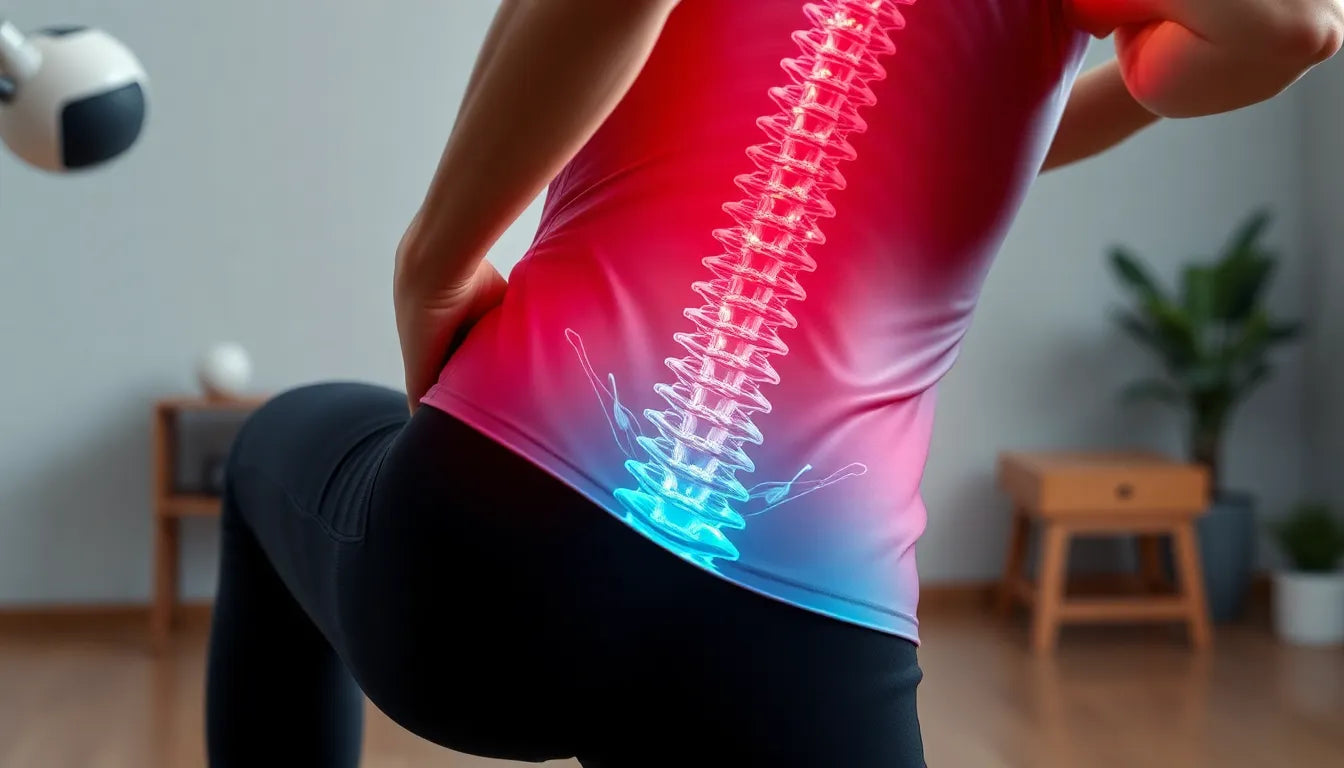Workplace injuries are an unfortunate reality for many employees, and among these, herniated discs are a common and debilitating issue. A herniated disc occurs when the soft inner gel of a spinal disc pushes through a tear in the tougher exterior casing, often resulting in pain, numbness, or weakness. This condition is particularly relevant in occupational settings, where physical demands can lead to such injuries. In fact, herniated disc injuries affect 5 to 20 per 1,000 adults annually, especially those aged 30 to 50, highlighting its prevalence. These injuries significantly impact productivity and quality of life, with over a million U.S. workers affected each year.
Why addressing herniated disc injuries matters
Understanding and addressing herniated disc injuries is crucial for both employees and employers. For workers, these injuries can lead to chronic pain and long-term health issues, affecting their ability to perform tasks and maintain a high quality of life. For employers, the implications include decreased productivity, increased absenteeism, and potential legal and compensation costs. Thus, it is essential to tackle both the medical and legal aspects of work-related herniated disc injuries to ensure a healthier, more productive workforce.
This blog post aims to provide a comprehensive understanding of herniated disc injuries in the workplace, focusing on their causes, symptoms, and the legal challenges involved in seeking compensation. By shedding light on these aspects, we hope to empower both employees and employers with the knowledge needed to prevent and manage these injuries effectively.
medical insights: causes and symptoms of herniated disc work injuries
Herniated disc injuries in the workplace primarily arise from several common mechanisms. One of the leading causes is overexertion, which occurs when employees lift heavy objects or perform repetitive tasks that strain the spine. This is particularly prevalent in industries such as construction, warehousing, and manufacturing, where physical labor is a daily requirement. Additionally, slips, trips, and falls contribute significantly to these injuries, often resulting in sudden, acute trauma to the back.
Another factor is direct trauma, such as being struck by or against objects, which can lead to immediate disc herniation. Repetitive motion, especially in jobs that require constant bending or twisting, also increases the risk of disc injuries over time. These activities can gradually wear down the spinal discs, making them more susceptible to herniation.
The symptoms of a herniated disc can vary but often include severe pain in the lower back, which may radiate to the legs or arms, depending on the location of the herniation. Many individuals experience weakness or numbness in the affected areas, and in severe cases, complications such as sciatica or nerve damage can arise. These symptoms not only cause significant discomfort but can also lead to chronic disability if not properly addressed, ultimately reducing workplace productivity.
navigating the legal landscape: compensation challenges for herniated disc injuries
For employees suffering from a herniated disc due to workplace activities, securing workers' compensation can be a complex process. Eligibility for compensation typically requires proving that the injury is work-related, which can be challenging, especially in cases where the injury may be attributed to degenerative conditions rather than acute incidents. The legal system often requires substantial documentation and medical evidence to establish a direct link between the work activities and the injury.
Compensation claims for herniated discs are further complicated by the nature of the injury itself. While acute injuries from a specific incident are easier to prove, chronic conditions resulting from repetitive stress can be more difficult to substantiate legally. This distinction is crucial, as it influences the likelihood of a successful claim and the potential settlement amount.
The average settlement for herniated disc work injuries ranges from $40,000 to $80,000, although this can vary widely based on factors such as the severity of the injury, the employee's ability to return to work, and the quality of legal representation. Cases with strong evidence and effective legal advocacy may result in higher compensation, highlighting the importance of consulting with experienced legal professionals when pursuing a claim.
In conclusion, understanding the medical and legal aspects of herniated disc work injuries is essential for both employees and employers. By addressing these issues comprehensively, workplaces can better support affected individuals and implement preventive measures to reduce the incidence of such injuries in the future.
Prevention and management strategies for herniated disc work injuries
Preventing herniated disc injuries in the workplace requires a proactive approach focused on safety and ergonomics. Implementing workplace safety measures is crucial to minimizing the risk of these injuries. Employers should invest in comprehensive safety training programs that educate employees on proper lifting techniques and the importance of maintaining good posture during repetitive tasks. Additionally, providing the right equipment, such as lifting aids and supportive footwear, can significantly reduce the strain on workers' spines.
Early intervention and proper management are essential to mitigate the long-term effects of herniated disc injuries. Encouraging employees to report symptoms early and seek medical evaluation can prevent further complications. Implementing return-to-work programs that include modified duties and gradual reintegration can help injured workers recover while maintaining productivity.
The role of ergonomics in preventing and managing herniated disc injuries
Ergonomics plays a vital role in both preventing and managing herniated disc injuries. By designing the workplace to fit the needs of employees, businesses can significantly reduce the risk of injury. Ergonomic solutions such as adjustable workstations, supportive chairs, and proper lighting can help maintain spinal health and prevent strain. For employees recovering from a herniated disc, these aids can facilitate a smoother transition back to work by minimizing discomfort and promoting healing.
Employers should conduct regular ergonomic assessments to identify potential hazards and make necessary adjustments. Encouraging workers to take regular breaks and perform stretching exercises can also alleviate tension and promote overall well-being.
Frequently Asked Questions
What are the primary causes of herniated disc injuries at work?
Herniated disc injuries at work are primarily caused by activities that involve heavy lifting, repetitive motions, and prolonged sitting or standing. Common workplace incidents such as slips, trips, and falls, as well as direct trauma from accidents, can also lead to these injuries.
How can I prove my herniated disc is work-related for compensation purposes?
To prove that a herniated disc is work-related, it is important to document the injury thoroughly. This includes keeping records of any workplace incidents that may have caused the injury, obtaining medical evaluations that link the condition to work activities, and consulting with legal professionals who can help establish a strong case for compensation.
What should I do if I suspect I have a herniated disc from work?
If you suspect a herniated disc due to work activities, seek medical evaluation immediately to confirm the diagnosis and receive appropriate treatment. Additionally, report the injury to your employer and consider consulting with a legal expert to understand your rights and options for compensation.
Are there specific industries more prone to herniated disc injuries?
Industries with higher physical demands, such as construction, manufacturing, and warehousing, are more prone to herniated disc injuries. These sectors often involve heavy lifting, repetitive tasks, and environments where slips and falls are more likely.
Can ergonomic solutions really help with herniated disc recovery?
Yes, ergonomic solutions can significantly aid in the recovery from a herniated disc. By providing proper support and reducing strain, ergonomic aids such as adjustable chairs, desks, and supportive footwear can promote healing and facilitate a safer return to work. They also help prevent further injury by encouraging proper posture and reducing repetitive stress.
Sources
- DePasse, J. M., & Palumbo, M. A. (2022). "Lumbar Disc Herniation." NCBI StatPearls.
- "Back Injuries in the Workplace." OSHA Education Center.
- "Herniated Disc." Deuk Spine Institute.
- "Herniated Disc Injury and Workers' Compensation." Petro Cohen Law.
- "Average Settlement for Herniated Disc Injury." Greenberg & Ruby Lawyers.



